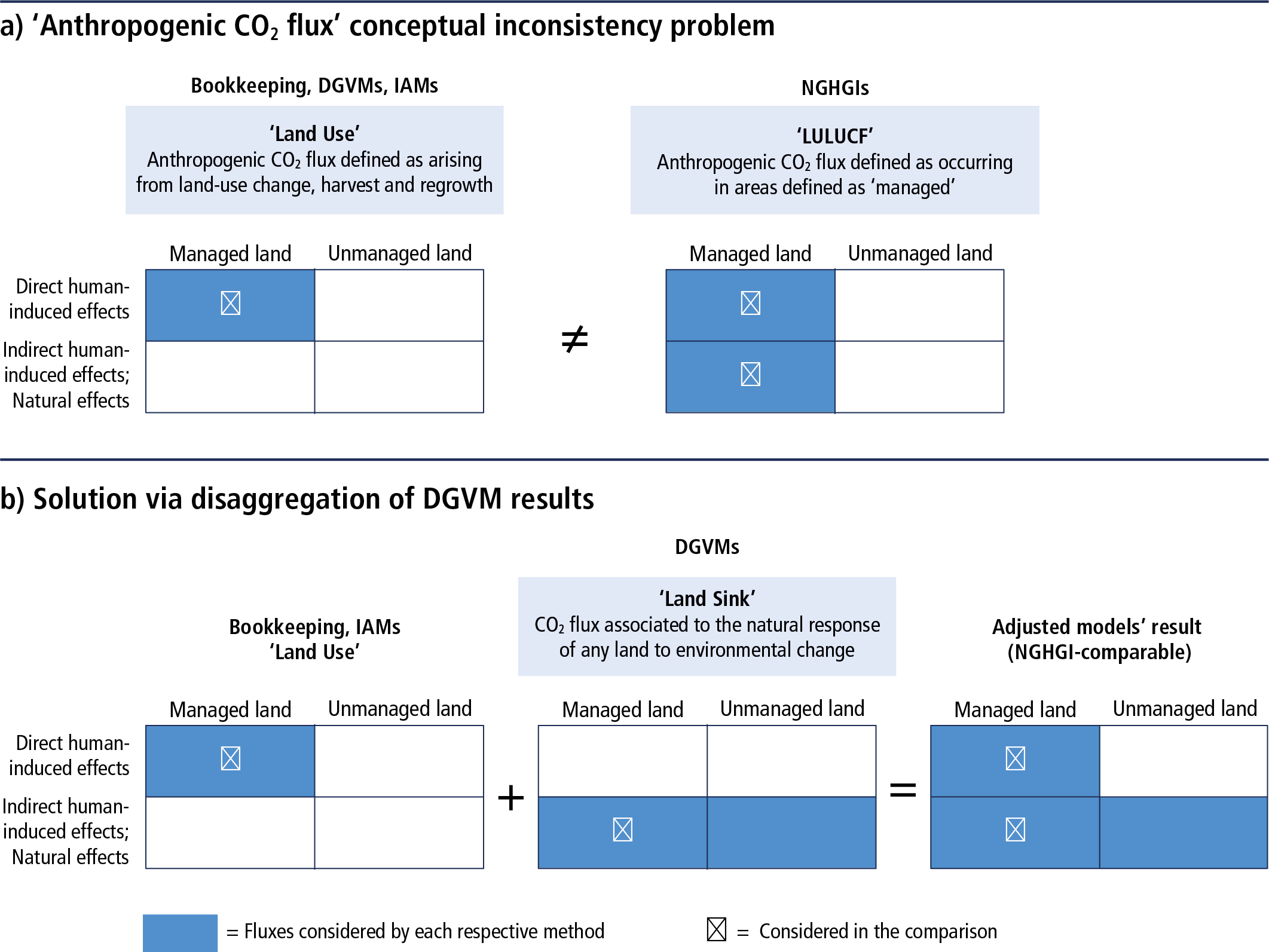Figure 7.6
Figure caption
Figure 7.6 | Main conceptual differences between global models (bookkeeping models, IAMs and DGVMs) and NGHGIs definitions of what is considered the ‘anthropogenic’ land CO2 flux, and proposed solution (from Grassi et al. 2021). (a) Differences in defining the anthropogenic land CO2 flux by global models (‘land use’) and NGHGIs (‘LULUCF’), including the attribution of processes responsible for land fluxes (IPCC 2006; 2010) in managed and unmanaged lands. The anthropogenic land CO2 flux by global models typically includes only the CO2 flux due to ‘direct effects’ (land-use change, harvest, regrowth). By contrast, most NGHGIs consider anthropogenic all fluxes occurring in areas defined as ‘managed’, including also the sink due to ‘indirect effects’ (climate change, atmospheric CO2 increase, N deposition etc.) and due to ‘natural effects’ (climate variability, background natural disturbances). (b) Proposed solution to the inconsistency, via disaggregation of the ‘Land Sink’ flux from DGVMs into CO2 fluxes occurring in managed and in unmanaged lands. The sum of ‘land use’ flux (direct effects from bookkeeping models or IAMs) and the ‘Land Sink’ (indirect effects from DGVMs) in managed lands produces an adjusted global model CO2 flux which is conceptually more comparable with LULUCF fluxes from NGHGIs. Note that the figure may in some cases be an oversimplification, in other words, not all NGHGIs include all recent indirect effects.
